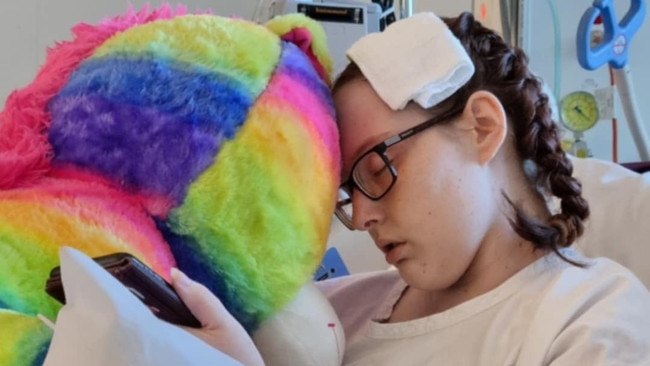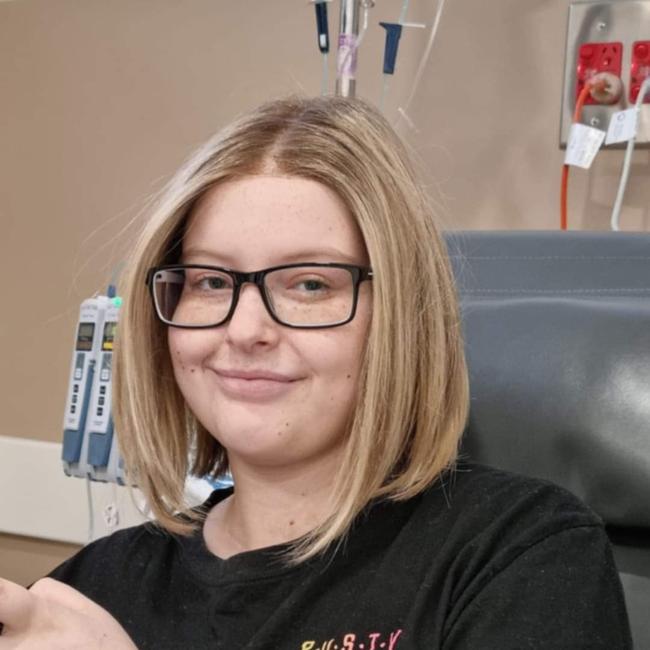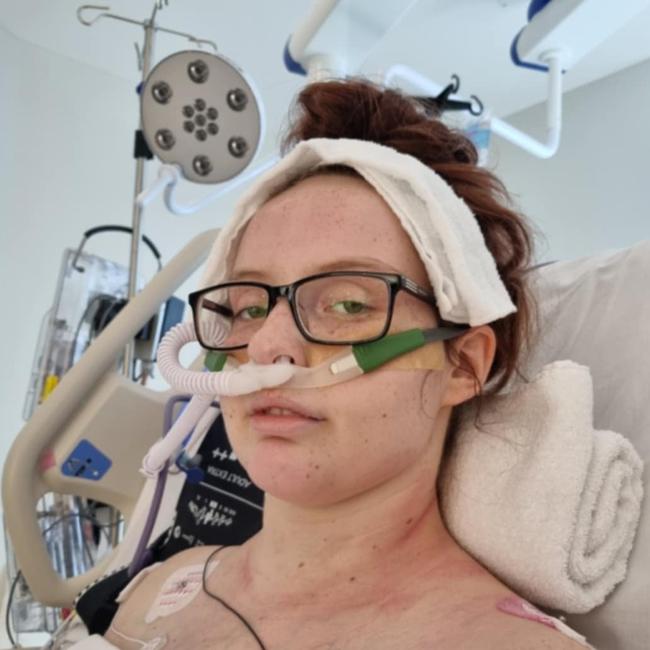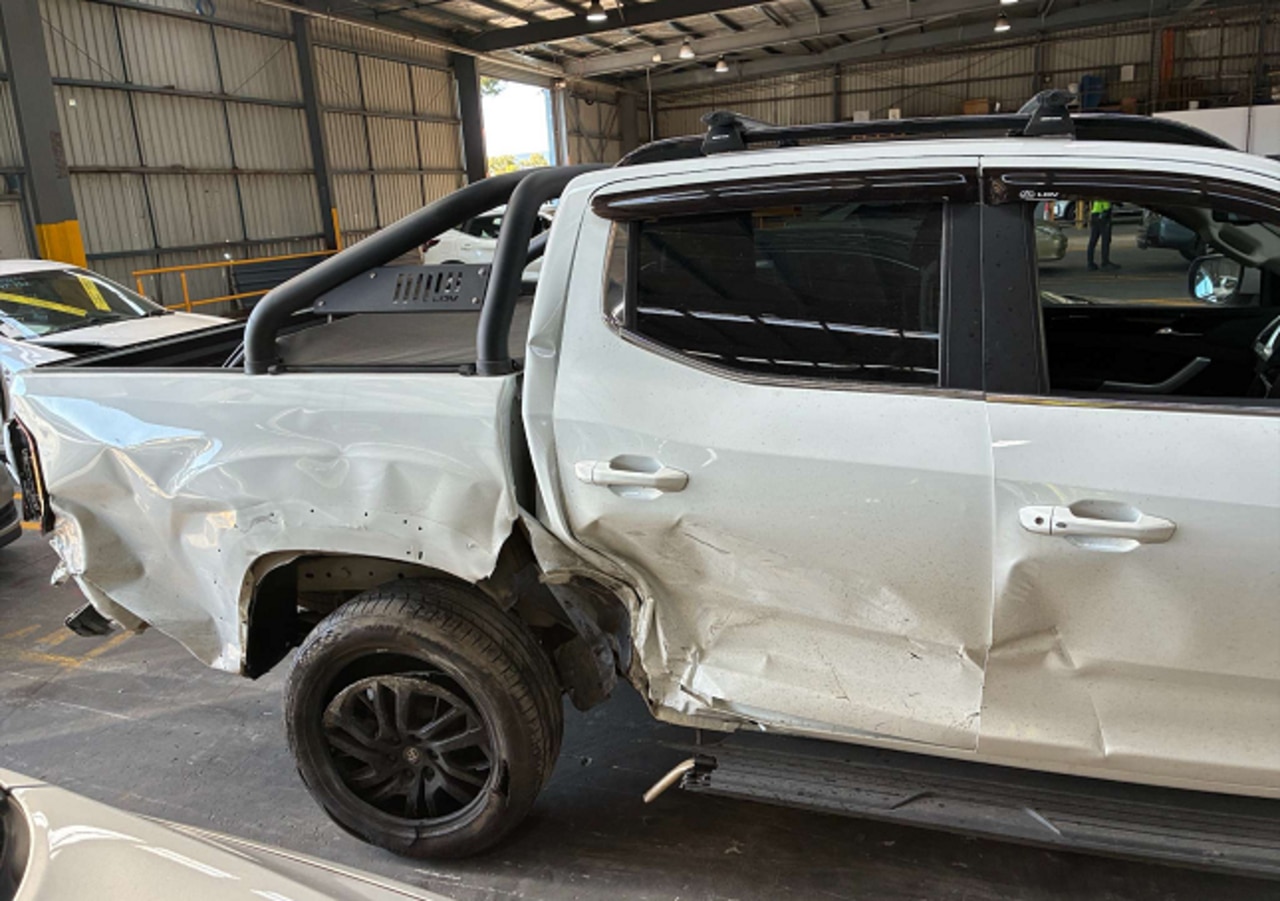Jarni Greatorex, 18, opens up about her battles with cancer from asbestos
A Victorian teen who is one of a handful of kids globally to be treated for asbestos cancer says more needs to be done to remove the harmful substance from society.

Bass Coast News
Don't miss out on the headlines from Bass Coast News. Followed categories will be added to My News.
A Bairnsdale teenager who was one of only 40 children worldwide to be treated for a cancer caused by asbestos wants the deadly material removed from every buildings at any cost.
Jarni Greatorex, 18, was diagnosed with peritoneal mesothelioma in 2022 but was left in limbo for about a year as local doctors struggled to identify the cancer — which at that point had never been found in kids in Australia.
But after emergency heart surgery, two days in an induced coma and up to 10 weeks at a time at hospital nearly 300km from home — and with the help of overseas medical professionals — she had her answer.

Now Ms Greatorex is on a mission to make sure no one ever suffers from this cancer — caused by the deadly substance that was banned more than 20 years ago.
“There are so many people that don’t understand or don’t quite know how dangerous asbestos is,” she said.
“It’s especially important for younger people, a lot of them are going into the workforce now as tradies or builders and if they’re going into a home to complete renovations then they need to know about it because otherwise they’re exposing themselves to it.”
Asbestos kills about 4000 Australians a year.
Ms Greatorex’s mother Jessie Dean said kids should not be getting this cancer from asbestos which “should have been removed 30 years ago”.
“It’s significant to talk about how much it disintegrates and continues to do so. While everyone’s talking about all these plans, it’s getting worse,’’ she said.
“If kids are rough housing it in a school and they go through a wall it’s a massive threat.
“It’s a constant threat in our environment that no one knows is there and it gets worse and worse.
“Jarni is 18 years old and they knew more than two decades ago and should’ve removed it.”
How Ms Greatorex ingested the asbestos is under investigation.

While Ms Greatorex was in hospital in 2021 for blood clots Ms Dean underwent her own cancer treatment travelling from Bairnsdale to Melbourne after chemotherapy to be by her daughter’s bedside.
“I had my oesophagus removed and when she was at Monash children’s with clots I had chemotherapy back home and would drive back to sit with her. I lost all my hair at Monash Children’s Hospital,” Ms Dean said.
Ms Greatorex said because of her age the cancer was “acting differently” to how it would affect an older patient.
“As much as my symptoms line up with regular symptoms, the way my cancer is acting is completely differently because I’m not at that age where it’s a lot harder to fight it off and I haven’t had the time for it to develop,” she said.

Asbestos is estimated to be in one in three Australian homes.
Asbestos and Sillica Safety and Eradication Agency chief executive Jodie Deakes said older homes had a “high likelihood” of containing asbestos.
“Asbestos cement roofs are particularly concerning, as they are in the poorest condition, having been directly exposed to years of sun, wind, rain and hail. Heavy rains can wash fibres into guttering, contaminating surrounding areas,” she said.
It comes as Australia observes National Asbestos Awareness week.
WorkSafe executive director of health and safety Sam Jenkin said it was concerning to still see workers being exposed to asbestos because they didn’t know it was in their workplace.
“The tragic consequences of exposure to asbestos fibres has been known for decades and there is no excuse for employers that allow workers or members of the public to be exposed to this silent killer,” Mr Jenkin said.





